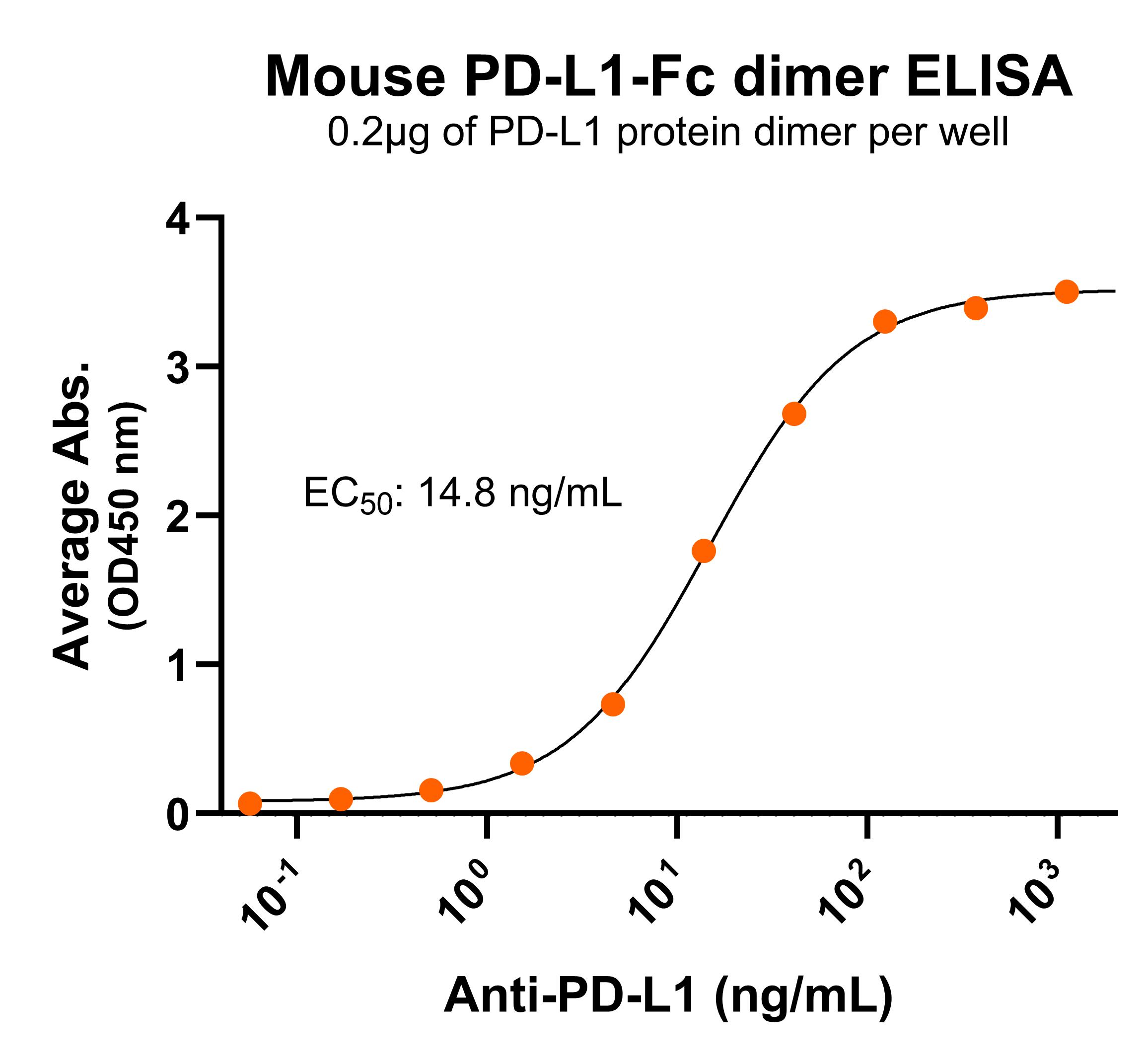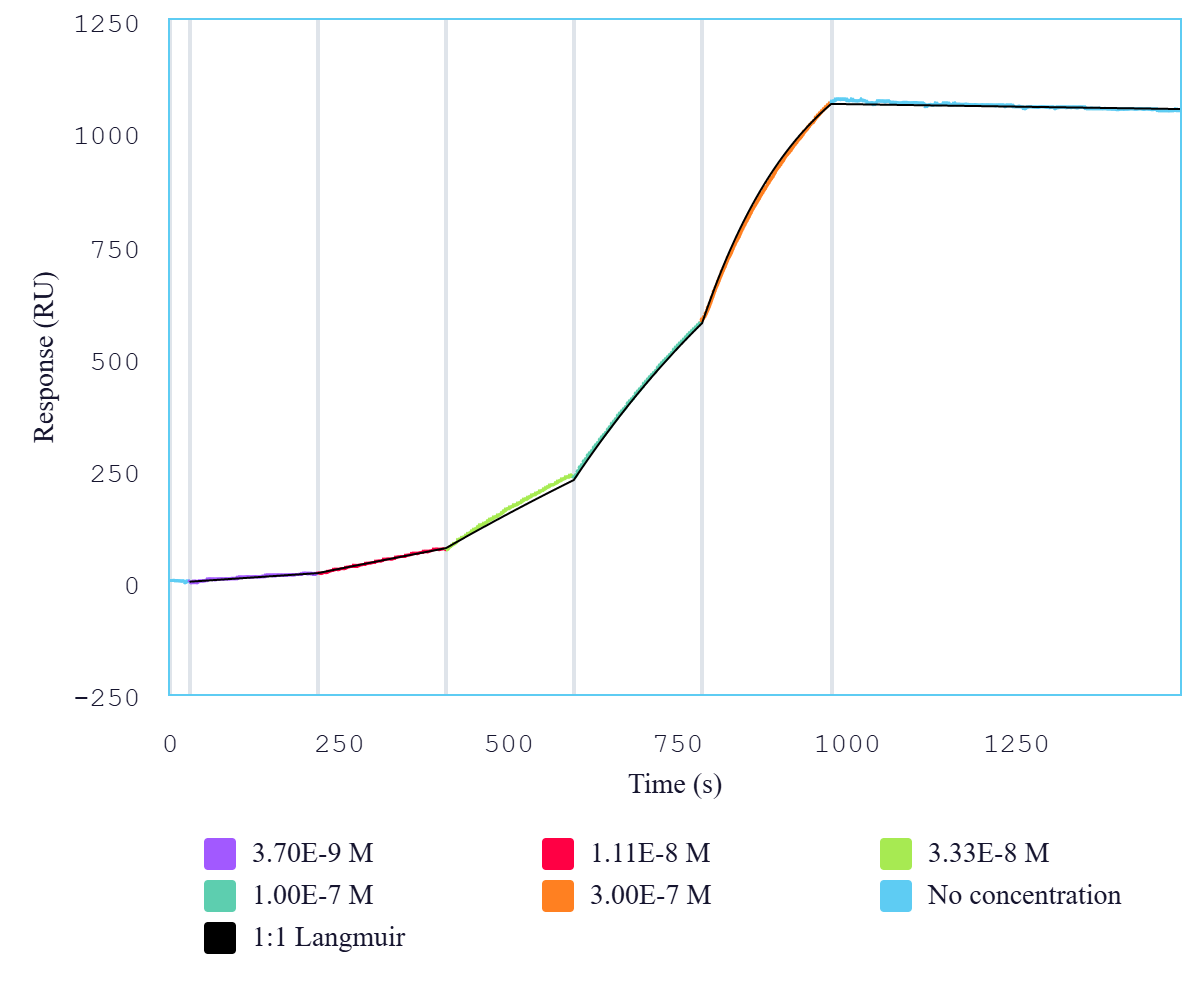 MW: Molecular Weight marker reduced condition
NR: PD-L1 dimer under non-reduced condition
MW: Molecular Weight marker reduced condition
NR: PD-L1 dimer under non-reduced condition Immobilized mouse PD-L1-Fc protein dimer (CSP-25190-04) at 2 μg/mL (100 μL/well) can bind anti-mouse PD-L1 monoclonal antibody with half maximal effective concentration (EC50) range of 7.4-29.5 ng/mL (QC tested).
Immobilized mouse PD-L1-Fc protein dimer (CSP-25190-04) at 2 μg/mL (100 μL/well) can bind anti-mouse PD-L1 monoclonal antibody with half maximal effective concentration (EC50) range of 7.4-29.5 ng/mL (QC tested). Immobilized mouse PD-L1 dimer protein
Immobilized mouse PD-L1 dimer protein